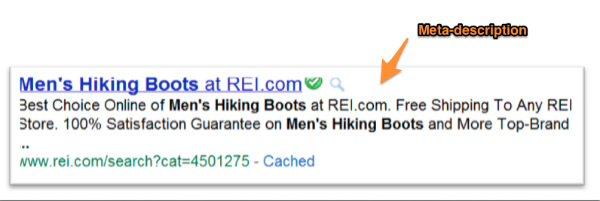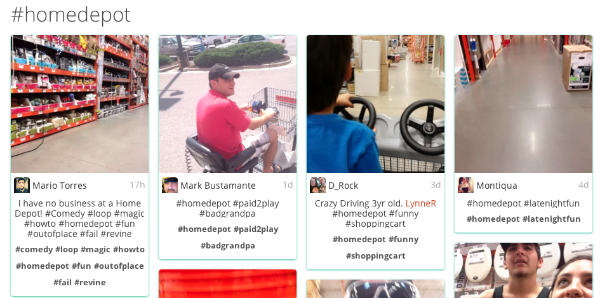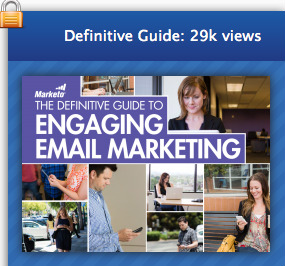As content marketing gains recognition as a
viable online marketing strategy, businesses are producing content of all types at an accelerated rate. But what good is compelling content if it can’t be found? The truth is, if it can’t be found by your audience, it won’t be very successful, which is why
content optimizationis such a crucial step in the content marketing process.
Through content optimization, you are providing essential data that search engines will use to determine what your content — and, by extension, your business — is all about. Search engines then use this information in the search results they display for relevant keyword terms or phrases. As content in the form of text, images, videos, and news is now included in these search results, the content optimization processes you use should be tailored to the types of content you are producing.
Below are some tips on how best to optimize content in each of these four key formats — text, image, video and news:
Optimizing text
Website content optimization is crucial for all written text, but it is particularly important for landing pages that include information about other content pieces.
Title tags: One of the most important elements of website optimization is the title tag. In HTML code, the tag “(title)” is used to set off the page’s title tag, which tells the audience what the page is about in just a few words.
Title tags are used in a number of places to describe the content. For example, they are used by search engines as the link text for each search result they display. Additionally, they are often used on social media networks to describe the page when someone shares the content. The title tag also appears at the top of the browser when the page is viewed, and if the browser is tabbed, it will be the name of the tab for the page being viewed. As a result, title tags are not just important to search engines; they serve as meaningful ways to describe your page’s content for your audience.
Meta descriptions: Meta descriptions are typically displayed in search engine results pages (SERPs) as the descriptor text for each result, making it a key piece of information for your audience.
The meta-description should accurately describe what visitors will find when they click to your content (see REI example below). Successful meta descriptions concisely state the purpose of the content page and include applicable keywords. This is your opportunity to sell searchers on clicking through to your page, so it’s best to avoid generic descriptors, like “
Welcome to our home page,” that don’t really tell them anything about your content or give them a reason to click through. In addition, search engines limit the amount of real estate available for descriptions — normally about
150-160 characters. Any text that goes beyond that will likely be cut off.
Meta keywords: Meta keywords are somewhat similar to meta descriptions. And although the meta keywords tag doesn’t seem to directly help improve page rankings, they have been known to potentially hurt search engine rankings if the tag is “overstuffed.”
Some webmasters have been known to paste as many keywords as possible into a meta keyword tag, hoping their presence will prompt inclusion in additional search results. However, that is not the case, so it’s best to err on the side of caution and include only a few truly relevant keywords in this tag.
URLs: A keyword-rich URL provides search engines with even more descriptive information about your content. So, in addition to optimizing content tags, your URL structure should be optimized to ensure that it is straightforward, meaningful, and contains the appropriate keywords that are relevant to your content. When appropriate, you may want to incorporate long-tail keywords into your URLs, so users seeking more specific results may find your content more easily in their searches.
Optimizing images
As consumers frequently search for images, the visual content you display on your website also needs to be optimized for discovery. Not only are images included in specific “Image” searches on search engines, they can also appear in the main “Web” search results — if the search engine determines that your image is relevant to a particular search term or phrase. In fact, your images may appear on a SERP even when your other content pages don’t.
Unlike text optimization, search engines can’t derive full meaning from image-based content — yet. (Though it’s certainly a goal all search engines have for the future). Though they largely rely on the context of the page (i.e., the text, and the text-related tags) an image appears to identify its relevance to a search query, the meta tags that are used for each image also play an essential role in determining its contextual meaning. Types of meta data that can be optimized for images include source (i.e., file location and name), alt, and title tags. To achieve the best results in search, all of these image tags must be optimized.
Alt tags: Alt tags serve as alternate text to describe the image when the image is not available to be displayed. This is key for several reasons:
- An image may not be displayed if a user’s internet connection is particularly slow, or if the page fails to load correctly.
- Additionally, if text-reading software is being used (e.g., for users with visual impairments), it is the alt tag that gets read aloud to describe the images that appear on the page.
For these reasons, and others, it’s important to choose simple, yet keyword-rich phrases in your alt tags to describe your website images.
Image tags: Similar to alt tags, image tags designate the words that should appear when a user scrolls or hovers over an image. They also help your audience understand the context of the image, so the tag text you choose should describe the image accurately and contain relevant keywords.
Alt and title tags are imbedded within the image source code as follows:
<title=”vanilla ice cream cone with rainbow sprinkles” alt=”ice cream cone” img src=”icecreamcone.jpg” />.
Filename: Though the alt tag and image title tag clue search engines in to what the image isof, an appropriate filename goes one step further — it provides contextual information on how the image relates to the other content on the page.
Just like your images’ alt and title tags, your image filenames should include the keyword that you’re optimizing your content for. So, rather than uploading your image files into your website using a filename like “DC000245.jpg,” try to use descriptive names, like “icecreamcone.jpg.”
File size: As mentioned previously, a user may see alt tag text, rather than an image, if a page does not load correctly. One way to decrease the chances of these page-load problems is to adjust the file size of your images, to make sure your website can handle them properly. Both large image files and image-heavy content pages can make your website load slowly or not at all — both of which may result in lower search engine rankings. Therefore, I recommend reducing your file sizes as much as possible, without forgoing the quality of the image.
Optimizing videos

Today it’s easier than ever for anyone, including marketers, to produce video content. From the many videos that have gone viral, we’ve learned that videos don’t necessarily need to be professionally recorded or scripted to be successful — they just need to be interesting, enjoyable or useful, and compelling.
To get started, create an optimized, branded channel for your business on the video site of your choosing. Having a branded channel increases brand recognition and provides leverage for your other content. Next, optimize your video as follows:
Video titles: Your video title should contain relevant keywords, but should also appeal to your audience’s interests. Dull titles that are overly keyword-conscious will lead visitors to believe that your video is just marketing hoopla. Your goal should be to draw people in with a catchy title that entices them to watch your video through to the end.
Video descriptions: A video description should clearly portray what the video is about, and should set viewers’ expectations on what they will see by watching. Though your description should include keywords, it should primarily be written in a way that addresses the needs of your audience, not just of search engines. Lead your video descriptions with a link to the page on your website that is most relevant to the subject matter, so viewers know where they can find the additional content and other information you provide.
On-site optimization: As with images, when posting video to your site, be sure to optimize the description and title tags, as search engines use those tags to understand video content and context.
Once your video has been optimized, most sites you might use to host your videos, such as YouTube and Vimeo, provide embed codes that you can paste into your website’s HTML — this will allow visitors to watch your videos right on your page, rather than having to visit the video site. Optimize your video’s filename just as you would with images — i.e., incorporating targeted keywords.
Optimizing news

Every business owner that has a website is a publisher. Similarly, every business owner online today has the capacity to produce and report on industry-related news. Whether it’s through a blog, a “news” section on a website, or through social networks and other brand communication outlets, optimizing your news content can help your organization get recognized as an insightful source of relevant industry news and thought leadership.
Yet, online news is a highly competitive space, which makes it tough to generate news content that will rank on search engines and get discovered. This means you must carefully and correctly optimize your news content in order for it to get discovered and drive the ongoing reader interest that will benefit your business.
Here are some key considerations involved in news content optimization:
Google News: In order for your website’s news feed to be included in Google News results, you’ll need to
submit your blog or press release sections directly to Google News. The news team at Google will review your content and, if approved, include it in news search results. Keep in mind that Google News has
explicit requirements for all sites that want to submit news content.
Static URLs: To publish news content that ranks along with other authentic news sites, you will need each article to exist on a static URL — meaning that every article you produce is created on its own separate page on your site.
Keywords: Like all other content types, your news articles should be keyword-optimized. Though the body of your article should include your relevant keywords, make sure your content is not over-optimized (i.e., stuffed with keywords). Additionally, if your news piece includes photos or video elements, be sure to optimize each according to the guidelines outlined above.
Headlines: News headlines should be interesting and grab your readers’ attention. Just like a web page ranking in regular search engine results, you are aiming for your news content to rank highly in news results. To achieve this, your news content will need to have complete metadata, including the keywords you are targeting.
Overall, content optimization is an integral part of the content development and marketing process, and should be treated as such. If your content producers consider each optimization point when developing text, image, video, and news content, the optimization process will go much more smoothly. After all, your content won’t be as successful as possible without being fully optimized.
via Content Marketing Institute http://contentmarketinginstitute.com/2013/09/guide-content-optimization-key-content-types/



 Today it’s easier than ever for anyone, including marketers, to produce video content. From the many videos that have gone viral, we’ve learned that videos don’t necessarily need to be professionally recorded or scripted to be successful — they just need to be interesting, enjoyable or useful, and compelling.
Today it’s easier than ever for anyone, including marketers, to produce video content. From the many videos that have gone viral, we’ve learned that videos don’t necessarily need to be professionally recorded or scripted to be successful — they just need to be interesting, enjoyable or useful, and compelling. Every business owner that has a website is a publisher. Similarly, every business owner online today has the capacity to produce and report on industry-related news. Whether it’s through a blog, a “news” section on a website, or through social networks and other brand communication outlets, optimizing your news content can help your organization get recognized as an insightful source of relevant industry news and thought leadership.
Every business owner that has a website is a publisher. Similarly, every business owner online today has the capacity to produce and report on industry-related news. Whether it’s through a blog, a “news” section on a website, or through social networks and other brand communication outlets, optimizing your news content can help your organization get recognized as an insightful source of relevant industry news and thought leadership. Looking for help with your biggest content marketing challenges? We’ve invited some of the experts who spoke at this year’s
Looking for help with your biggest content marketing challenges? We’ve invited some of the experts who spoke at this year’s 






